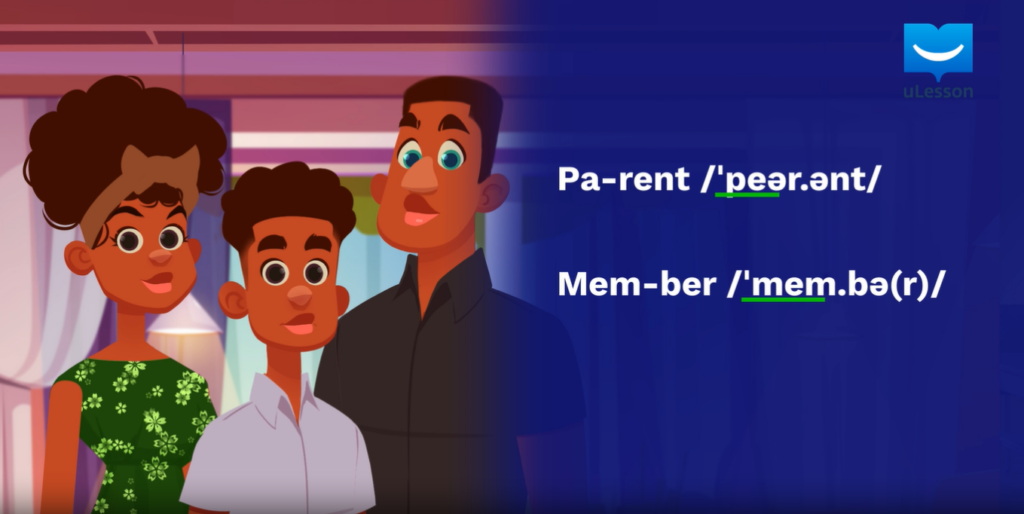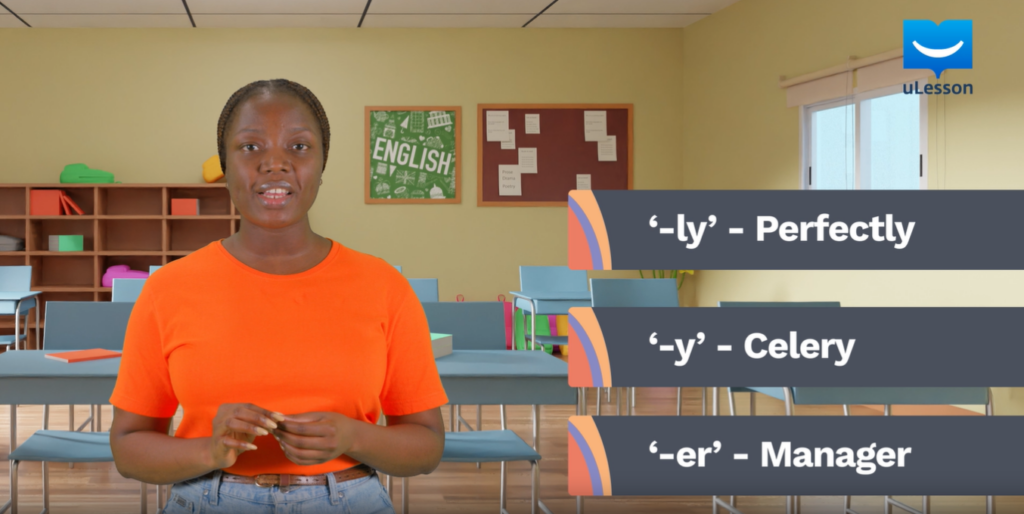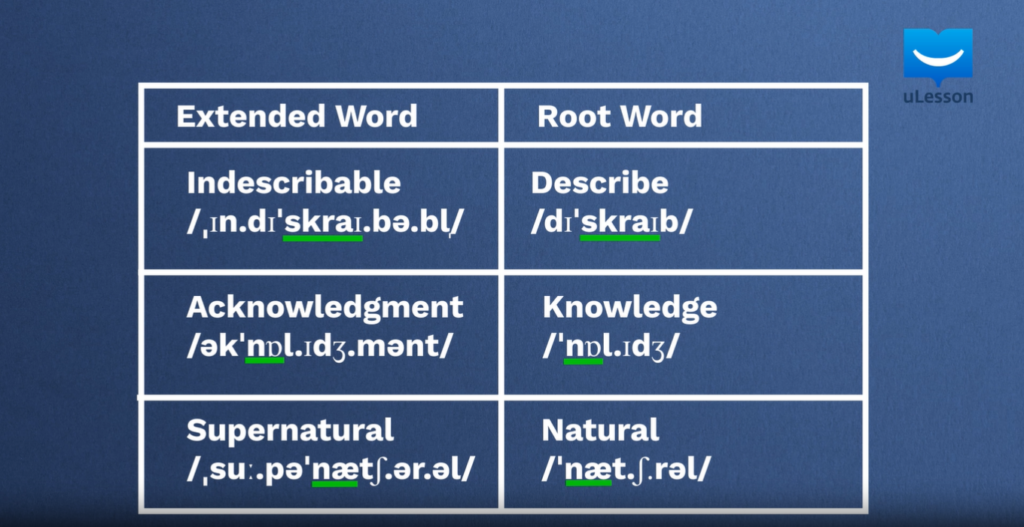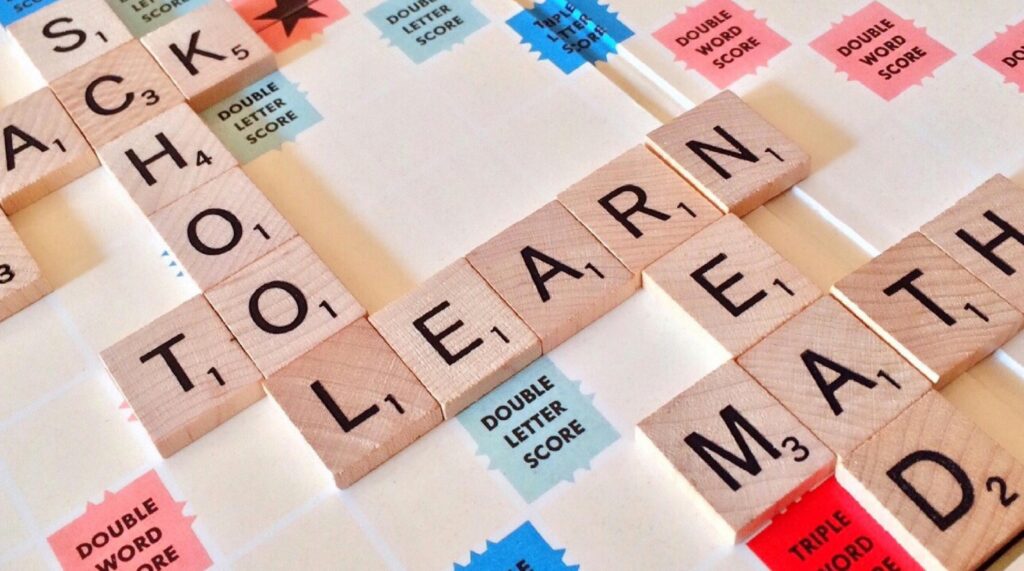Dear uLesson superstar, do you struggle with stress? No, I’m not talking about the typical stress, but word stress. It might seem like a confusing maze to navigate, but it isn’t. This post dives into the world of word stress as discussed in a video lesson on the uLesson app, and we’ll start with understanding syllables.
What is a Syllable?
A syllable is basically the amount of rhythm or breaks we have in a word, often containing one vowel sound and sometimes an additional consonant sound.
Take the word “legislative” as an example; it has four syllables—leg-is-la-tive—each with just one vowel sound. When words have two or more syllables, one syllable stands out more when spoken out loud. This is called the stressed syllable. In “legislative,” the stressed syllable is the first syllable: LEG-is-la-tive. But in “repeat,” it’s the second syllable—re-PEAT.
How can you tell where the stressed syllable is? Go check out their transcriptions in a dictionary; the symbol resembling an apostrophe (‘) before a syllable indicates the stressed one. This symbol is the word stress symbol.
Now, we can’t always carry a dictionary to identify stressed syllables, right? That’s why we share some tricks to help in the lesson.
6 Tricks to Identify Word Stress
Trick 1
Nouns and adjectives with two syllables usually have the first syllable stressed. For instance, “parent” and “member” have the stress on the first syllable, just like “broken” and “happy.”

Trick 2
Most two-syllable verbs stress the second syllable. “Provide” and “believe” are examples. But there are exceptions, like “exam” (a noun) with stress on the second syllable and “happen” (a verb) with stress on the first. Recognising the stronger, louder, and longer syllable (another way to identify the stressed syllable) is crucial. Interestingly, three-syllable words can be stressed anywhere.
Trick 3
If they end with “ly,” “y,” “er,” the stress is likely on the first syllable, as in “perfectly,” “manager,” and “celery.”

Trick 4
Words with four or more syllables typically have stress in the middle, not at the start or end, e.g., contemporary.
Trick 5
Words ending in “-tion,” “-sion,” “-cian,” and “-ic” stress the syllable before the suffix. For example, “education,” “information,” “electrician,” and “occasion.” Confirm this in your dictionary by checking the position of the word stress symbol.
Trick 6
Longer words derived from root words often share stress with the root. “Indescribable” comes from “describe,” stressing the same syllable—SCRIB. The same goes for “acknowledgment” (knowledge) and “supernatural” (natural).

Keep in mind that there are exceptions. Also remember to pay attention to the word stress symbol in the transcription; it always comes before the stressed syllable. As you practice identifying stress using these guides, apply them to words like “renunciation,” “dictionary,” or any other word you can think of.
Did you understand word stress better? Whether it’s a yes or a no, head over to the uLesson app, where you can visually understand all we’ve been talking about. uLesson uses visually engaging video lessons to help you understand difficult concepts in little bits.
Join thousands of learners who are making complex subjects a piece of cake with the uLesson app. Download the uLesson app here, or use the web version instead.
Love learning!




13 Comments
Trick 1
Nouns and adjectives with two syllables usually have the first syllable stressed. For instance, “parent” and “member” have the stress on the first syllable, just like “broken” and “happy.
Trick 2
Most two-syllable verbs stress the second syllable. “Provide” and “believe” are examples. But there are exceptions, like “exam” (a noun) with stress on the second syllable and “happen” (a verb) with stress on the first. Recognising the stronger, louder, and longer syllable (another way to identify the stressed syllable) is crucial. Interestingly, three-syllable words can be stressed anywhere.
Trick 3
If they end with “ly,” “y,” “er,” the stress is likely on the first syllable, as in “perfectly,” “manager,” and “celery.”
Trick 4
Words with four or more syllables typically have stress in the middle, not at the start or end, e.g., contemporary.
Trick 5
Words ending in “-tion,” “-sion,” “-cian,” and “-ic” stress the syllable before the suffix. For example, “education,” “information,” “electrician,” and “occasion.” Confirm this in your dictionary by checking the position of the word stress symbol.
Trick 5
Words ending in “-tion,” “-sion,” “-cian,” and “-ic” stress the syllable before the suffix. For example, “education,” “information,” “electrician,” and “occasion.” Confirm this in your dictionary by checking the position of the word stress symbol.
Trick 6 Longer words derived from root words often share stress with the root. “Indescribable” comes from “describe,” stressing the same syllable—SCRIB. The same goes for “acknowledgment” (knowledge) and “supernatural” (natural).
Keep in mind that there are exceptions. Also remember to pay attention to the word stress symbol in the transcription; it always comes before the stressed syllable. As you practice identifying stress using these guides, apply them to words like “renunciation,” “dictionary,” or any other word you can think of.
I now understand it
Did you understand word stress better? Whether it’s a yes or a no, head over to the uLesson app, where you can visually understand all we’ve been talking about. uLesson uses visually engaging video lessons to help you understand difficult concepts in little bits.
Join thousands of learners who are making complex subjects a piece of cake with the uLesson app. Download the uLesson app here, or use the web version instead.
THIS TRICKS REEALLY HELPED ME.
Great to hear that! 💜